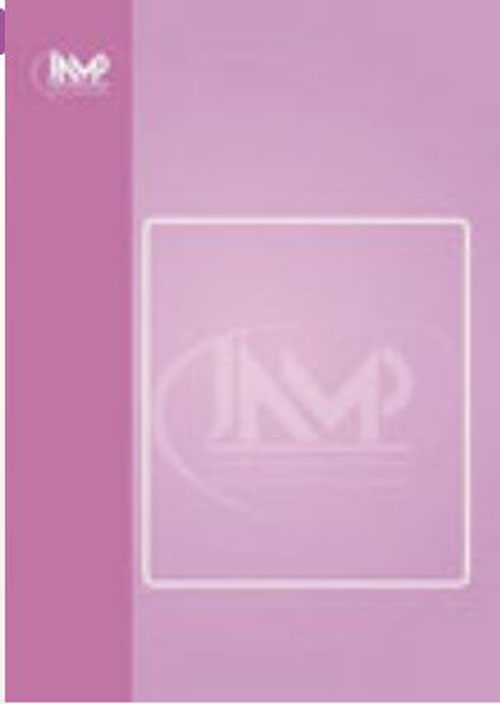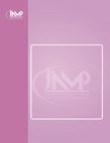فهرست مطالب

Journal of Advances in Medical Education & Professionalism
Volume:9 Issue: 2, Apr 2021
- تاریخ انتشار: 1400/01/16
- تعداد عناوین: 8
-
-
Pages 63-78Introduction
Storytelling is one of the earliest ways to share scientific advancements and discoveries. The advent of technology has updated this ancient art into a digitalized form. The boundaries between the digital storytelling (DST), and other types of videos are unclear. Therefore, in this review, the process, aim, producers, and uses of DST in health profession education have been reviewed.
MethodsThis study is a systematized review, which is in nature like a systematic review with only a few differences in the comprehensive search and quality assessment procedure. All studies, whose duplicates were removed, were retrieved from Science Direct, PubMed, and Scopus databases or through google scholar search engine screened in 3 stages: title, abstract and full study. All journal articles including experimental, case study and case report, mixed method, and qualitative studies in English language in the field of health profession education were chosen for this review after being evaluated based on QUESTS dimensions.
ResultsIn total, 35 articles were included in the review. The studies had been done in health promotion, nursing education, medical education, patient education, social work education, andcommunity health education. In some of these studies, the producers and users of digital stories were different, which is in contrast with center for digital storytelling that emphasizes the process of DST. The results of this review showed that all stakeholders of health system could be producers of digital stories with various aims; e.g. community health, empathy promotion, attitude and behaviorchange, clinical thinking, and skills improvement.
ConclusionThis systematized review indicated that DST has some applications in different subjects in different fields of health professions and with a potential to be used by different stakeholders of health system. According to the definition of DST, digital storytelling involves the process of writing a script to produce a digital story by one individual or a group. Consequently, there is a difference between DST and producing a digital story. Therefore, researchers should consider the correct use of this term in their studies. Although few interventional and high-quality studies have been conducted in this area, further quantitative and qualitative research is suggested.
Keywords: Health education, Medical education, Nursing education -
Pages 79-84IntroductionEmergency medical services (EMS) are provided in the difficult and unpredictable conditions of prehospital settings. Therefore, EMS students need to receive quality education to acquire considerable knowledge and skills. This qualitative study aimed to explore the educational challenges in medical emergency students.MethodsThis qualitative study was carried out in 2019 using qualitative content analysis. Participants were fourteen undergraduate EMS students purposively recruited from Hamadan University of Medical Sciences, Hamadan, Iran. Data collection was done through semi-structured interviews and continued up to data saturation. Data were analyzed using the conventional content analysis approach explained by Graneheim and Lundman.ResultsThe four main categories of the challenges of EMS education were shortcomings of the clinical education environment, lack of qualified EMS instructors, deficit of the curriculum, and theory-practice gap.ConclusionDuring their university education, EMS students face different challenges. For effective training, more coordination is needed among the emergency medical board, faculty membersand EMS managers. It is also recommended that the curriculum should be revised.Keywords: education, Emergency medical services, Qualitative study, Students
-
Pages 85-93IntroductionToday’s human health care needs are so complex and dealing with them requires interprofessional collaboration and teamwork, which must be learned by the appropriate educationalmethods. In this regard, the Crisis Management Interprofessional Education program (CMIPE) in the form of desktop maneuver with the presence of the military nurses and other professional groups involved in the crisis was designed and implemented in Military Nursing School in Tehran, Iran. The aim of this study was to explore the experiences of the military nurses of participating in an interprofessional education program in crisis management domain.MethodsThis was an exploratory case study using conventional content analysis of the experiences of 28 military nurses participating in this program. The qualitative data were collected with three methods including observation in the field (note-taking and filming) and an open-ended questionnaire and two focus group discussions with military nurses.ResultsQualitative analysis of the experiences of military nurses led to the emergence of four overarching themes which included professional mutual recognition, shared mental models, valuingjoint responsibility and collaboration, perceived self-worth as a member of an interprofessional team.ConclusionThe crisis management education based on an interprofessional approach created new experiences for military nurses by bringing together professional groups involved in a crisis in a constructive interaction, and with emphasis on learning from each other. This empowers them to provide teamwork and interprofessional collaboration in a critical situation, and therefore, enhancing their ability to cope with different crises.Keywords: Management, Interprofessional education, Nurses, Qualitative analysis
-
Pages 94-101IntroductionBased on the needs of the health system, continuous revising and monitoring are essential for General Practice (GP) Curriculum. The present study was conducted to investigate thediseases of GP Curriculum based on the students’ and professors’ viewpoints.MethodsThis cross-sectional study was carried out at Mashhad University of Medical Sciences in 2018. A total of 80 GP students of internship and 71 professors of the faculty of medicine in clinical and basic science disciplines were enrolled in the study using quota and convenience sampling methods, respectively. Two self-made, reliable, and validated 4-point scale questionnaires(ranging from totally agree to totally disagree) were used to collect the data on the viewpoints of students and professors on the diseases of GP curriculum. The mean score and percentage ofagreement between professors and students on the incidence of each disease were calculated.ResultsThe highest and lowest rates of agreement between the professors and students in terms of the presence of curriculum diseases belonged to the echolalia curriculum with a mean and standard deviation of 1.92±0.68 and the dean denial with a mean and standard deviation of 2.0±6.68, respectively. The results showed a statistically significant difference between the viewpoints of professors and students regarding the diseases of the carcinoma of the curriculum (P<0.001), idiopathic colitis (P<0.001), the schizophrenia of the curriculum (P=0.01), and echolalia curriculum (P=0.01).ConclusionThe present study showed that professors and students were all in agreement about 12 out of 13 diseases of the GP curriculum. Thus, educational planners in Iran’s medical schools should focus on the continuous evaluation and the necessity of curriculum revision, as one of the priorities of the educational system.Keywords: Curriculum, Pathology, General practitioners, Students, Medical Schools
-
Pages 102-108IntroductionInstruction in teacher-centered formats may lead to early learning fatigue, which in turn, decelerates students’knowledge retrieval. Presently, teachers try to increase students’participation and their active attention to course content by incorporating effective, applicable, low-cost, and enjoyable teaching apparatuses.MethodsThe participants of this quasi-experimental study were the students of speech therapy in 4th semester (n=83) at Ahvaz Jundishapur University of Medical Sciences. They were simplerandomly divided into two groups of experimental (who received the crossword puzzle accompanied by lecture or the hybrid method as Group A) and control (who received the traditionalmethod as Group B). The students’ knowledge level and students’satisfaction with their received instruction methods were assessed as outcome measures throughout the experiment for both groups. The test score of students’ initial knowledge of the concepts in Speech Therapy, the score from the semester final exam of the courses in forms of multiple choice questions, and the retainedlearning score were calculated as the pre-test, post-test and a follow-up measurement, respectively. Independent-samples T-test for comparative analyses of students’ satisfaction between the pretestand post-test, and multivariate repeated measures ANOVA test were used to analyze the students’ knowledge level at three time-points (before, immediately after, and one month after thetrainings). The data were analyzed using SPSS ver. 18.0 software, and at the level of statistical significance of P≤0.05.ResultsBoth educational methods significantly improved the students’ knowledge level after the trainings (P=0.030); however, the mean score of knowledge and learning of Group A (mean=17.14) were significantly higher than that of Group B (mean=16.02) immediately after (P=0.036) and one month after the trainings (mean=18.26 vs. 16.10) (P=0.001). The mean score of students’ satisfaction in Group A was also significantly higher than that in Group B (P=0.010).ConclusionUtilizing the crossword puzzle as an enjoyable and participatory teaching tool accompanied by lecture could improve management quality in Speech Therapy sessions.Keywords: Crossword puzzle, Speech therapy, Medical education
-
Pages 109-122IntroductionGiven the importance of the education system in the health sector and the necessity to calculate the cost in this sector, this study aimed to calculate the cost of education for health students in Shiraz Medical School, using activity-based costing (ABC).MethodsThis study was conducted in Shiraz University of Medical Sciences in 2015-2016, considering the cost structure of the education department. The data required for the present research study was gathered from accrual accounting system, payroll system, educational deputy system called SAMA, list of paid salaries, information received from medical school such as exact position of individuals and course credits assigned to teachers, interviews conducted at the university headquarter in order to determine the appropriate indicators for allocating the costs, and interviewing clinical and non-clinical teachers to calculate the cost of training in these fields.ResultsThe findings indicated that the cost of training in general accounted for 70% of the total cost of student education. PhD in Medical Ethics, Assistant of Radiotherapy and Ph.D. in Pharmacology turned out to posit the highest cost for each student respectively, while MPH, Master of Medical Engineering, and Master of Electronic Medicine Education had the lowest cost for each student, respectively. The cost in all fields is more than the per capita cost of student education paid to the university.ConclusionAuthorities should focus on controlling and reducing the cost of training, which is the main component of the costs. Factors such as the number of students in each field, degree, andtype of field are effective in the costs of education. Hence, in order to allocate the budget more equitably, costs of education for each field calculated by ABC should be based on allocating the fundsto the university.Keywords: Activity-Based Costing, Accounting, Financial Management, Medical school


